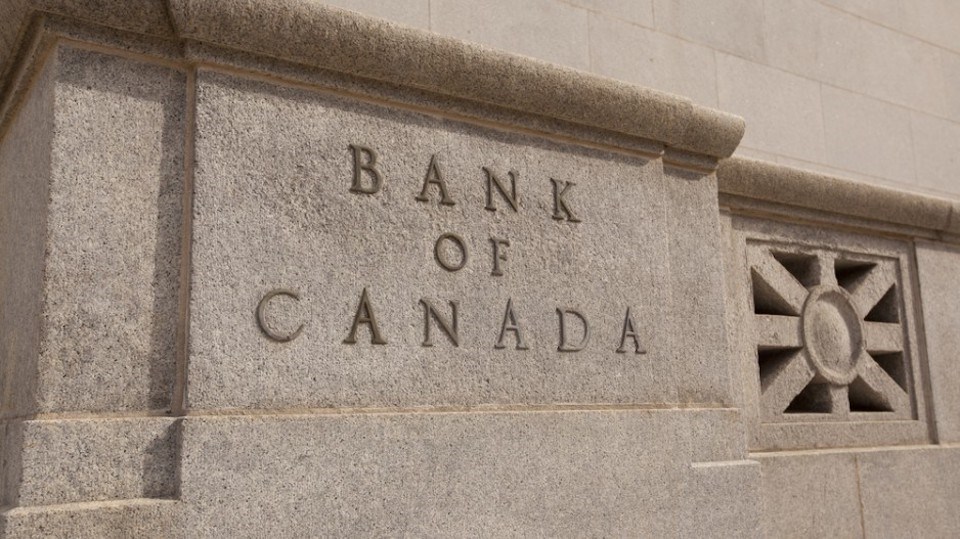While debate over inflation sparked by massive government spending on COVID-related support programs has emerged in the last few months, historic precedents show Canada has several factors that should hold price increases relatively in check.
Ongoing global supply chain dysfunction has also raised alarm over its impact on the price of consumer and other goods and its potential to fuel inflation.
But Lucas Herrenbrueck, associate professor of economics at Simon Fraser University and an expert on inflation, said it’s difficult to predict how hard Canada would be hit by those price increases.
“This is a little like forecasting the weather,” Herrenbrueck said. “Generally, when you look at the forecasts, the one thing every forecast gets wrong is the uncertainty. Almost every forecast you read is almost just a little too certain, because sometimes, something truly unexpected like COVID happens. An inflation is possible, but I couldn’t tell you if it will happen next year."
Any talk of a threat for runaway inflation is wildly overblown, he said, because those cases involve countries that reached annual inflation rates of 100 per cent – or a doubling of prices every year – which often involve government interference in a central bank’s monetary policies. He cited Turkey now (current inflation rate approaching 40 per cent) and Mexico in the late 1980s (with rates surpassing 150 per cent) as examples.
In Canada, where the Bank of Canada’s independence is closely guarded, rates reached only about 15 per cent during the 1970s oil shock and the post-Second World War period in the late 1940s.
The most recent data shows that Canada’s inflation rate reached around 4.7 per cent last November.
“In the late 1980s, when inflation was 5 per cent a year in Canada, it’s not a period where a lot of people would be calling the breakdown of Canada,” Herrenbrueck said. “If we went back to the kind of inflation we had in the 1980s, I think people would be upset for a while, but no one would call it a breakdown of the monetary system.”
An independent monetary policy maker’s role in this situation is vital, said Werner Antweiler, associate professor at the University of British Columbia’s Sauder School of Business.
“I really stress the point of having an independent central bank,” Antweiler said. “If there’s one truth that economists have learned … [it’s] that central banks need to be … at arms’ length to political policy makers; it gives the bank the ability to focus on one task, and that is the stability of the money.”
Antweiler is more concerned about ongoing supply-chain disruptions. The key here, he said, is whether the current high costs of certain goods result in negotiations of longer-lasting rates (like labour contracts) and consumer/business expectations about the cost of commerce.
If such expectations become normalized, that cost increase could create long-term inflation.
“This is where long-term inflation is coming from … if the perception is that we will continue to have higher prices, people will demand higher wages in labour negotiations,” Antweiler said. “This is how a spiral would begin its movement.”
Herrenbrueck noted that the last time the western world – most with highly independent central banks and sophisticated monetary policy mechanisms – suffered major inflation was during the 1970s oil shock, as the sharp price spike in one key commodity affected almost everything else in the economy.
In the meantime, there are other factors that may contribute to inflation in Canada over the next year, including continued federal government spending.
Antweiler said that’s why reduced federal government stimulus spending is one of his two predictions on what will happen on the Canadian inflation front in 2022.
“We should expect a tapering off of the federal stimulus, because the government can’t keep its pocket open forever,” he said. “They have been spending to deal with an unprecedented shock to our economy, but because it was in such a rush, it’s not well-targeted. So you have money sloshing around in the economy – some perhaps in places not needed – and … it translates to extra demands, which have impacts on the supply chains.”
Antweiler’s other prediction? An interest rate increase.
But policy-makers need to be careful when wielding their ultimate weapon against inflation, because the balance between controlling inflation and hurting an economy looking for a post-COVID path to recovery will be extremely tricky.
“Monetary policy is a pretty crude instrument,” he said. “It affects the entire economy, including a direct effect on industries like construction. So you cannot fine-tune it; it’s used when you have to be really aggressive on slowing down the economy to control inflation, but the result can be very, very painful.”
Herrenbrueck conceded that Canada’s inflation level in the next year could be unpleasant. But he also noted that the situation will depend heavily on what people spend their money on – and whether or not those items are affected by this round of inflation.
“Talking about the 1970s and the 1980s, that time in Canada – in hindsight – wasn’t necessarily a bad time for ‘the little guy,’” Herrenbrueck said. “It was a disruption, but not necessarily a big problem in income disparity. … I think what’s better to do, rather than trying to forecast something that’s so hard to forecast, is having something like earthquake preparedness. Don’t keep all your money under the mattress.”



